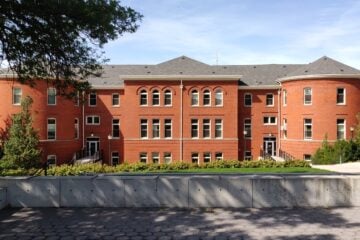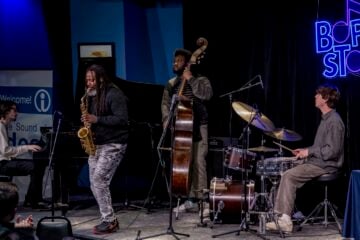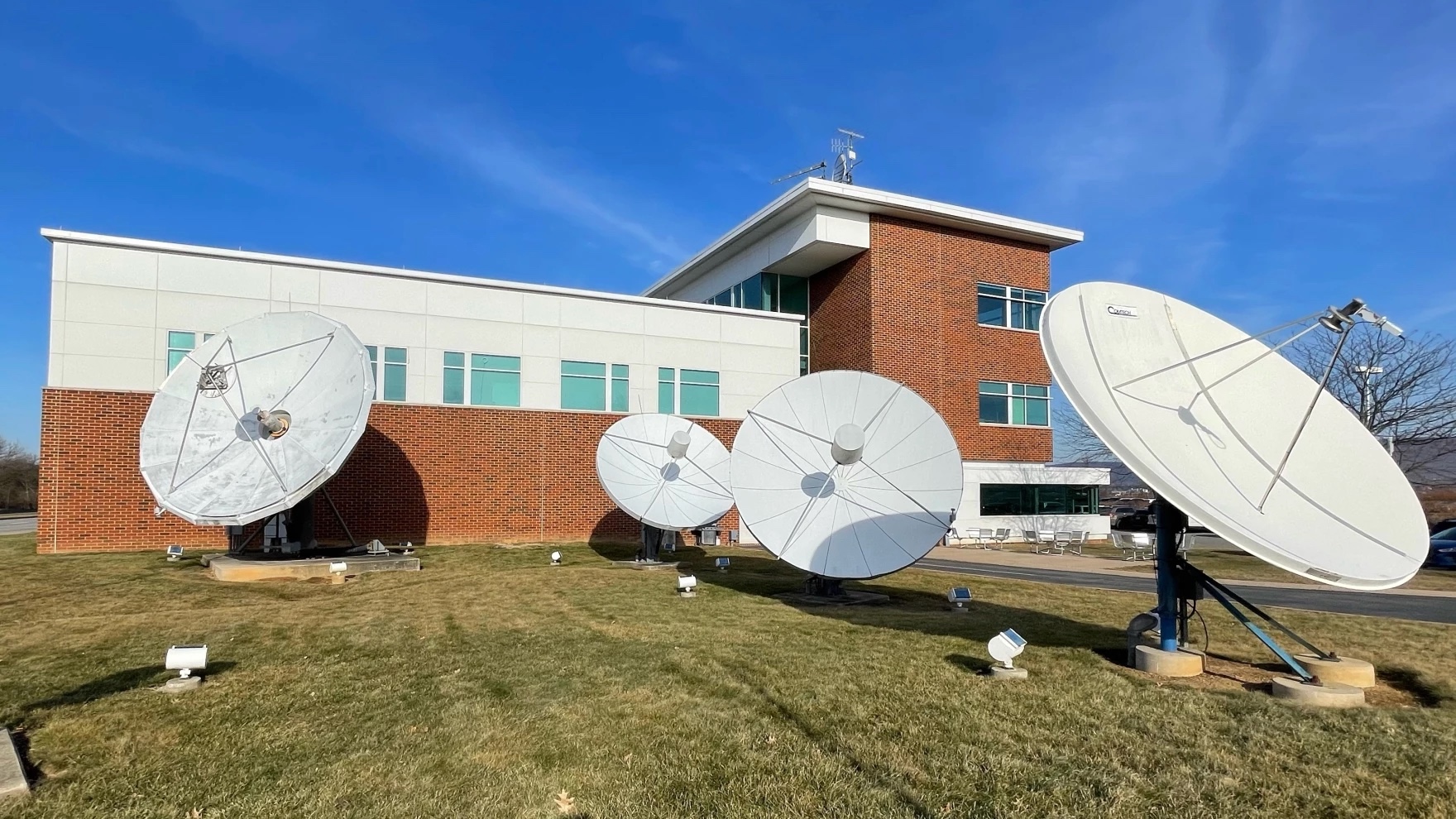How public radio can help solve the local news crisis: a response to Thomas Patterson

wellphoto / iStock
Could public radio help solve the local news crisis? Perhaps. But first we have to determine what we mean by local news, and whether the folks who bring you national programs such as All Things Considered and Morning Edition are suited to that mission.
In late January, Thomas Patterson, the Bradlee Professor of Government and the Press at the Harvard Kennedy School, published a “discussion paper” exploring that very question. The purpose of discussion papers, according to the introduction, is “to elicit feedback and to encourage debate.” Consider this my small contribution. (Patterson, I should disclose, was acting director of Kennedy School’s Shorenstein Center during my 2016 fellowship there and provided me with valuable advice for my 2018 book The Return of the Moguls.)
At the outset, Patterson writes that he seeks to answer two questions:
- “Do local public radio stations have the capacity to provide reasonably comprehensive news coverage of the communities they serve? Do they have the news staff needed to meet that requirement? And if not, what level of investment could put them in that position?”
- “Do local public radio stations have the capacity to reach enough members of their local community to make a substantial contribution to its information needs? And if not, what would be needed to substantially expand their audience reach?”
The answers to those questions come from 215 public radio stations that answered an online survey — a response rate of 89%. A majority of executives at the stations themselves saw their operations as a leading — or even the leading — source of news in their communities. But how large are those communities, and are they small enough to be considered “local”? We get an indication of that from the median cumulative weekly listenership (90,000) that the respondents reported, as well as the median number of unique monthly website visitors (40,000) — not on the level of New York or Chicago, or even Boston, but nevertheless suggestive of a regional listenership rather than one primarily grounded in one community. (For comparison, WBEZ in Chicago says its weekly audience comprises 476,000 different listeners.)
Patterson’s respondents said overwhelmingly that they could provide more news and information if they had more funding. Currently most of the stations say that they have fairly minimal staffing and limit their local programming — most of it news-oriented talk shows rather than reporting — to just a few hours a day. Funding is also harder to come by in rural areas and in red states, according to the findings. Patterson writes:
Local stations have demonstrated that they can do a lot with limited resources. … In sum, with additional funding, public radio has the capacity to fill much of the gap in local news created by the decline of the newspaper. Strengthening local public radio stations is a democratic imperative.
Local and regional news
Let me return to my opening: We can’t really say whether public radio can help ease the local news crisis without defining “local.” What Patterson focuses on appears to be regional coverage, at least for the most part. Indeed, he writes about directing new funding mainly to places where the daily newspaper is being hollowed out. Daily newspapers almost by definition cover a region rather than a single community. Regional news can be thought of as coverage of the principal city in a major urban area; state politics; and larger issues such as the environment, climate change, racial justice, housing and the like.
Regional news organizations may cover news in one smaller community, but only if it is either relevant or interesting to their broader audience. But they are not equipped to carry out accountability journalism in all of the various cities and towns they serve. In Greater Boston, for instance, there are 101 municipalities that belong to the Metropolitan Area Planning Council. The regional media, including the two major news-oriented public radio stations, WBUR (90.9 FM) and GBH (89.7 FM), couldn’t possibly be expected to cover the mayors, city councils, select boards, school committees, zoning boards, police departments and the like in each of those communities.
In 2022, Ellen Clegg and I interviewed the general managers of WBUR and GBH News on our podcast, What Works: The Future of Local News. We asked each of them if they had given any thought to what public radio might do to provide that kind of local coverage. Their answers were thoughtful and nuanced, but ultimately they added up to no. (I have edited their remarks for length without using ellipses.) Margaret Low of WBUR put it this way:
In an ideal world, with all the time and resources in the world, we would help lift up that kind of hyperlocal coverage. Right now we don’t have the capacity to do that. But I can imagine in a future world when we’re on a clear path, where we begin to think about how to bring that to the fore through WBUR, because we have a pretty wide megaphone, so to speak. I’m also supremely conscious that everything we cover, in particular on air, has to have resonance. If you live in Worcester, and you’re hearing a story about Cambridge, what does this story mean to you? Why should I care? Why should I sit up and listen? What are the wider implications of this story? Why does it matter to me if I don’t live in Worcester? They have to speak about something that is part of a larger economic trend or social trend, something that actually I can make sense of, and that actually adds dimension to my life. And that’s a hard challenge.
Pam Johnston of GBH offered a similar assessment but emphasized her operation’s outreach to Boston’s neighborhoods:
What we are thinking about all the time is how we can build a newsroom without walls. And what that essentially means is getting back into the community. This is something we learned during the pandemic, that we don’t need to be in a newsroom together to do journalism — we can actually do it anywhere. So we should do it in the community. Now that the COVID threat is lifting, we are going to make a practice out of getting into the community and sitting in coffee shops, and in libraries, and in places where people hang out, and listening to stories and creating relationships and getting back to basics. And hopefully that will help answer the question about how do you know what’s happening in the local town hall and the local school committee meeting. The more we can build trust, and relationships and credibility within the communities that we serve, they will tell us about the stories that they’re worried about, or the things that are happening that seem a little bit off. They’ll come to us because we’ll be part of that community.
That’s not to say there aren’t some public radio stations engaging in hyperlocal coverage. For instance, WNHH, a low-power FM station that is part of the New Haven Independent, a nonprofit local news organization, features hours of programming each weekday, and most of the hosts are people of color. (Morning host Babz Rawls Ivy was a guest on the What Works podcast last year.) Unlike the Independent, though, WNHH does little in the way of reporting; rather, it provides a voice for the community.
In Mendocino County, Calif., tiny KZYX was struggling to boost its local journalism when I visited program director Alicia Bayles in early 2020. She was hoping to share a Report for America corps member with The Mendocino Voice, a nearby digital startup.
In Haverhill, Mass., an advertising executive named Tim Coco operates WHAV, a low-power station with a robust website that is that city’s only independent source of news. (Coco, too, was on What Works last year.) There are also small commercial radio stations here and there, including several in Massachusetts, that provide local coverage.
There are examples of public broadcasters merging with other news organizations in order to boost their journalism, but those tend to be regional in focus as well. For instance, there’s NJ Spotlight News, which covers state politics and policy in New Jersey and is now part of NJ PBS; the Chicago Sun-Times, a venerable tabloid newspaper that is now nonprofit following its merger with WBEZ; Denverite, a startup that was acquired by Colorado Public Radio; and Billy Penn, a mobile-first project launched with great fanfare by the digital journalism innovator Jim Brady that now operates under the auspices of WHYY in Philadelphia.
The hyperlocal solution
What could public radio stations do to provide truly local news coverage? Well, here’s a possible but unlikely solution. In places with reasonably strong public radio at the regional level but a paucity of coverage at the local level, the stations could seek out foundation support so that they could offer digital-only coverage, community by community. A large public radio station might operate a web page in each city and town, with one or two dedicated reporters, producing hyperlocal reportage of the sort that is not designed to get on the air. Not only would it fill a real need, but these pages would help build recognition and loyalty among an audience that may or may not be current listeners to public radio.
This idea would be similar, if not identical, to the YourTown project that The Boston Globe ran about a dozen years ago. YourTown pages in each community were part of the Globe’s free Boston.com site and were intended to be paid for through local advertising. Little of that advertising ever materialized, though; and not long after John Henry bought the Globe from the New York Times Co. in 2013, the project was quietly shut down.
To be clear, I’m not actually proposing this as something that public radio stations ought to take on. It’s drastically different from their mission, and it would essentially involve running an entirely new operation under the auspices of the station. In addition, independent local news startups are sprouting up in a number of communities, and it would make little sense to crush them with competition before they can get up and going.
I also agree with Patterson that the larger public radio stations can do more to provide regional and statewide journalism in metropolitan areas whose daily newspapers have been hollowed out by corporate or hedge-fund ownership. WBEZ’s merger with the Chicago Sun-Times, the most dramatic example, was undertaken in response to the notorious Alden Global Capital’s acquisition of Tribune Publishing’s eight major-market dailies, including the Chicago Tribune. Public radio stations in major cities could act on their own, too, provided they had the resources.
Patterson, in his report, calls for increased government support at both the state and local levels, arguing that even Republican politicians might be willing to do that given that their rural constituencies are heavily dependent on public media. Patterson writes that these elected officials “understand the importance of public radio to rural communities in terms of keeping them abreast of what’s going on with market prices going on under the weather.” Even so, he says, significant private fundraising will still be needed.
It’s also intriguing that bolstering journalism at smaller public radio stations in rural areas might actually lead to more truly local coverage than would be the case in a large metropolitan area.
The local news crisis has been building for years. Much of the damage can be blamed on corporate chain ownership, which has destroyed newspapers both large and small. Patterson’s ideas represent an important contribution in thinking about ways to offset cuts at the large metro newspapers that provided the vast majority of accountability journalism and investigative reporting at the state and regional level. The lack of journalism at the community level will have to wait for another day.
Dan Kennedy is a professor of journalism at Northeastern University. This essay first appeared at What Works, a website about the future of local news published by Northeastern’s School of Journalism.






